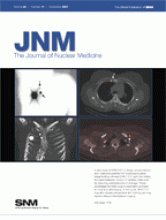TO THE EDITOR: The July 2007 article by Gould et al. (1) reported a 40% false-positive rate for cardiac PET 82Rb myocardial perfusion imaging with CT attenuation correction, using helical slow imaging (29 s) during free breathing and helical fast imaging (4 s) during a breath-hold at end expiration. Further, the authors suggested that correction with nonhelical, time-averaged cine CT images eliminates artifactual defects in PET 82Rb images. Our concern with the study is that it contrasts false-positive findings from cine CT with software alignment and false-positive findings from helical CT without software alignment. Because most manufacturers of PET/CT scanners have a software alignment tool to be used in conjunction with helical CT, we suggest that it is appropriate and important for Gould et al. to compare false-positive findings from software-aligned cine CT and false-positive findings from software-aligned helical CT (e.g., their slow helical CT scan). Table 5 of Gould et al. lists an artifact frequency for unshifted slow helical CT studies (27%, or 39/145) similar to that found for “conventional” PET 82Rb studies (21%, or 252/1,177) in an earlier publication by Dr. Gould's group (2), in which a 68Ge rod source was used for the attenuation correction. After visual checking of the PET 82Rb and attenuation images for misregistration, the misaligned conventional rod source studies were manually shifted using computer software (2). Moreover, even with cine CT, Gould et al. reported that 19% (22/114) of patient datasets were misaligned with PET and required software alignment (1). That is, the new paper (1) combined with the earlier publication (2) supports the conclusion that free-breathing helical CT and cine CT have nearly the same frequency of artifacts as does conventional PET. Significantly, all techniques required a software alignment solution.
In our institution, we have used a somewhat different approach on our 64-slice Biograph PET/CT scanner (Siemens). We acquire 3 very fast (2.7-s) helical CT scans during free breathing, 1 immediately before and 2 immediately after acquiring the stress PET 82Rb images (3). The exposure, CTDIvol, is 0.7 mGy in each scan. We have found that this protocol increases the probability of alignment between a PET 82Rb image and an acquired CT image. Our protocol also includes 3 CT scans at rest for correction of the rest PET 82Rb scan. Like Gould et al. (1), we have estimated visually the degree of PET/CT misalignment with this procedure using the PET/CT 3-dimensional fusion software of the manufacturer (3). We found no apparent misalignment between PET and at least 1 CT scan in 85% of studies at stress and 89% of studies at rest. The best-case misalignment was small, and appropriate for PET attenuation correction, in an additional 14% of the studies at stress and 11% of the studies at rest (3). In only a few cases (<1%) did we observe a large or severe PET misalignment with all 3 of the CT scans that then required computer software alignment. We have acquired 1,400 rest/stress PET/CT 82Rb clinical studies with this protocol. The total CTDIvol is 4.2 mGy with our 6–CT scan protocol. Gould et al. quoted a radiation exposure of 5.7 mGy for their helical CT scan and a radiation dose of 10 mGy for cine CT. We are studying techniques to reduce the dose even further. These steps include reducing the x-ray voltage from 120 to 100 kVp and even to 80 kVp in very thin patients and reducing the number of CT scans, thus requiring a greater reliance on software alignment.
In summary, the slow helical non–breath-hold CT approach originally proposed by Brunken et al. (4) produces a frequency of misalignment-related artifacts that is similar to the frequency reported for cine CT (1) and conventional PET (2). Gould et al. (1) did not provide the false-positive rate for software-shifted non–breath-hold helical CT, and this omission represents a major limitation of the paper. PET and CT alignment can be achieved with a fast helical multi–CT scan protocol that limits the need for software alignment tools to a small percentage of studies, while using an even lower radiation dose (3).
Footnotes
-
COPYRIGHT © 2007 by the Society of Nuclear Medicine, Inc.







